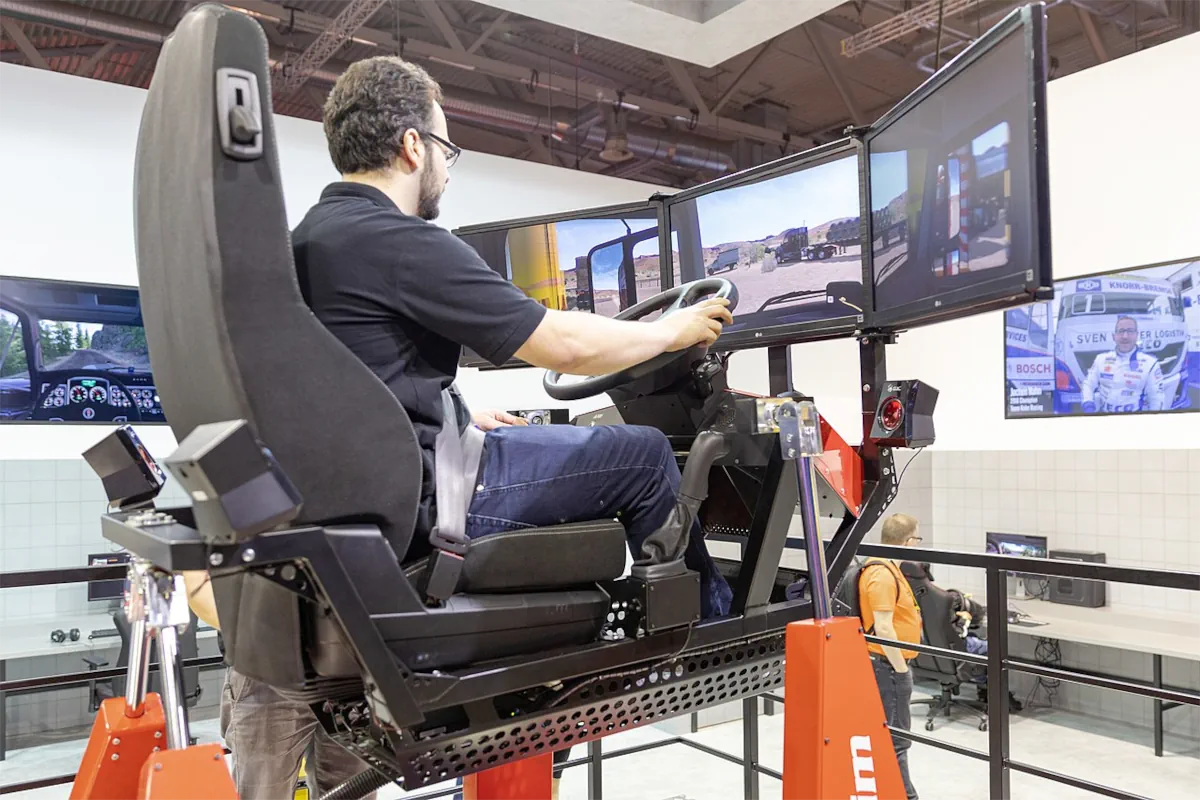Operations in the energy, nuclear, aviation, transport and logistics sectors are certainly difficult, complex to manage and require specially trained professionals. Unfortunately equipment, tools, devices and vehicles personnel must be able to use are expensive and not always available for training sessions; moreover they might damage or be dangerous if handled or driven by inexperienced people, even with a continuous supervision.
To deal with such issues, the companies and organizations involved in these sectors have been investing in 3D simulators.
3D simulators are software that offer realistic virtual learning environment and engaging scenarios, where user can experience the activity first-hand through specific peripherals such as headsets, joysticks, yokes, pedals, steering wheels, control panels, etc.
Virtual Reality (VR) and Augmented Reality (AR) allow to train personnel in a risk-free environment to properly respond in every situation, even in case of an emergency or accidents, improving safety and operational efficiency.
Simulator, as an educating tool integrating traditional didactic method, facilitates the achievement of training goals, since concepts, skills and competence are easily acquired and more durable.
In addition simulation activities allow to develop and improve professionals’ thinking, decision making, problem solving, teamwork and leadership attitudes.
Customization and the possibility to chose tasks difficulty degree make simulators the ideal way to test equipment and tools, devices and vehicles in a virtual environment, improving operators’ skills and the quality of performed tasks.
In addition several simulators can be accessed on all device types such as mobile, tablets and PCs, which means professionals can learn anywhere, any time.

Simulation training in the Oil and Gas or Renewable Energy industry, is being used to train employees and free lancer in conduct efficiency tasks with various equipment, tools and vehicles. The Offshore energy industry simulators aims to replicate the installation process and IRM tasks under realistic offshore conditions. They are an interactive, customizable solution for skills improvement, can be used in training for crane drivers, marine and installation crew, inspector, unmanned and autonomous pilots and operators.
In Maritime transport and port sector, highly technologies oriented and with a significant impact on the global economy, VR can help the seafarers and port facilities personnel to suitably respond to the various safety and security threats on-board at vessel and inside ports.
Maritime transport simulation provides naval and facilities experiences through virtual representations of ships and ports included surrounding environments. The use of simulators in maritime transport training is an essential component for developing seafarer and port workers skills, knowledge and competencies. They include photo-realistic seascape, interiors of ships, sea environments, coastal areas, and ports, in which officers, port superintends, marine pilots, and port officials prepare navigational equipment, navigate the ship, manage port activities.
Given all the economical, efficiency and safety benefits and pros offered by simulators, there is no wonder that their market is growing at an impressive rate and that main companies and organizations are investing to improve them and make them more engaging and real-like.
Massimo Torboli
DSO – Diving Safety Officer
Images
Cover: MC_09-0173-005_-_Flickr_-_NZ_Defence_Force – By New Zealand Defence Force from Wellington, New Zealand – https://commons.wikimedia.org/wiki/File:MC_09-0173-005_-_Flickr_-_NZ_Defence_Force.jpg
Article: 1280px-American_Truck_Simulator_Gamescom_2019_(48605662641) – By dronepicr – https://www.flickr.com/photos/132646954@N02/48605662641/ – American Truck Simulator Gamescom 2019

